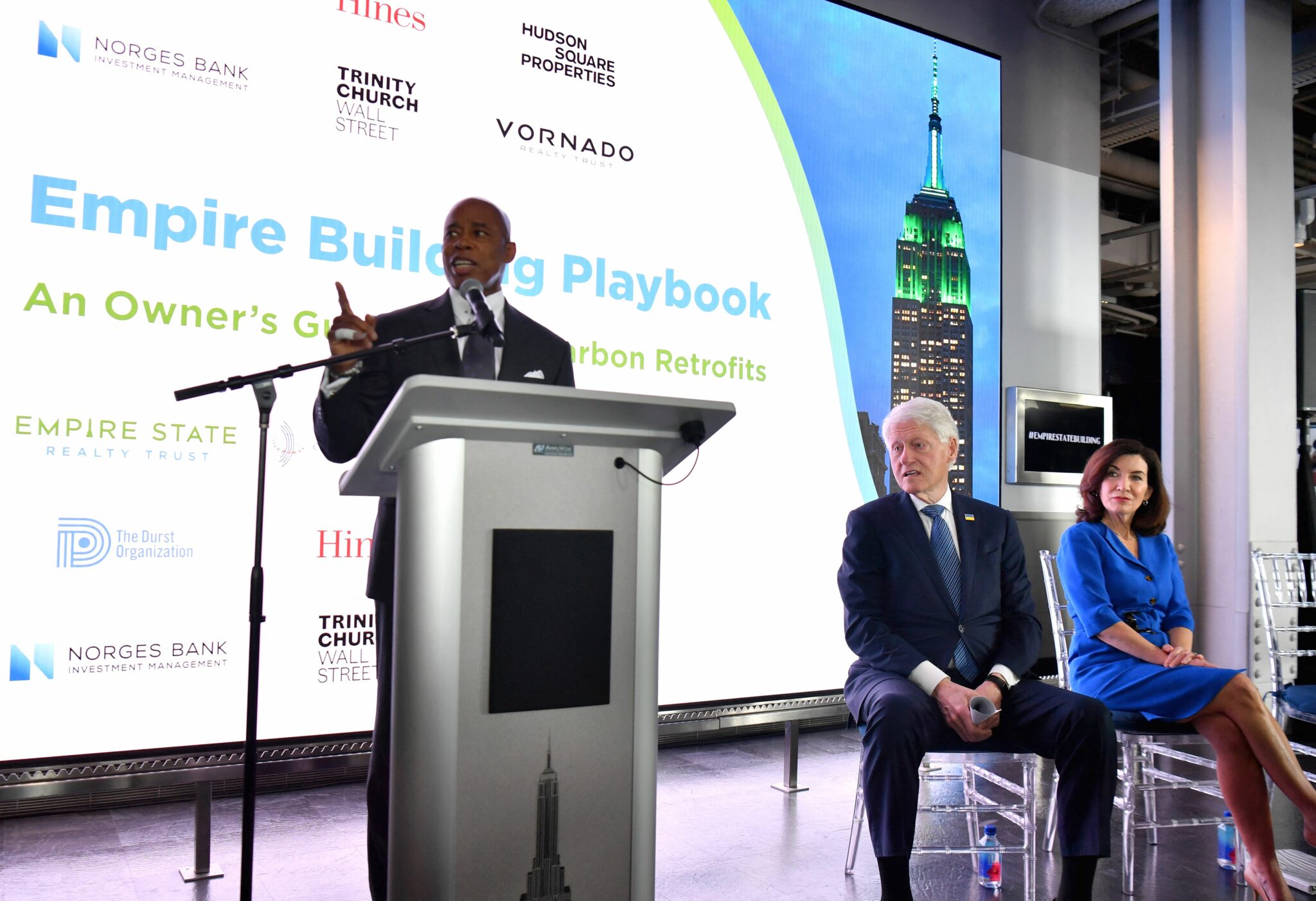
In January, the mayor reached back to the administration of former Mayor Michael R. Bloomberg by recruiting Rohit T. Aggarwala as commissioner of the city’s Department of Environmental Protection, or DEP, and chief climate officer. Under Bloomberg, Aggarwala created an Office of Long-Term Planning and Sustainability, and he later founded a program of environmental grants at Bloomberg Philanthropies.
Adams promoted Kizzy Charles-Guzman to executive director of a newly created Office of Climate and Environmental Justice, which consolidated four existing arms of city government. Charles-Guzman also served in the Bloomberg administration, advising the mayor on air pollution, leading the city’s first program to address rising temperatures and heat waves, and overseeing a range of health and adaptation initiatives.
And the mayor persuaded Vincent Sapienza to stay on as chief operations officer at the DEP, an agency with a $1.6 billion budget where he served as commissioner under Adams’ predecessor, Mayor Bill de Blasio.
While praising the appointments, Julie Tighe, the league of conservation voters president, said those leaders would need to make rapid progress on environmental issues ranging from bicycle lanes, bus lanes and automobile traffic to heat-trapping emissions from New York City’s buildings. Buildings are estimated to account for around 70 percent of the city’s greenhouse gas emissions because so much of the energy for their lighting, heating and cooling comes from burning fossil fuels.
Tighe lauded the uniting of two critical issues in the new Office of Climate and Environmental Justice. Still, she reports that the office has been hindered by a struggle to fill staff vacancies.
Tighe also credited the Adams administration with working to revive PlaNYC, a strategic initiative for climate adaptation created by Bloomberg in 2007 that set forth 10 sustainability goals involving land, water, transportation, energy, air pollution and climate change. Tighe said the new Office of Climate and Environmental Justice planned to focus on feasible steps to improve the climate situation city-wide in the next three to seven years.
Beyond climate adaptation, Tighe applauded Adams’ plans to make the city more friendly for bicyclists and pedestrians. “I am really happy to see them making commitments to investing in safer streets and bike lanes,,” she said, pointing to the 300 miles of protected bike lanes that the mayor promised during his election campaign.
Despite pledging to go beyond the City’s 2021 Street Plan, which calls for expanded infrastructure for transit, pedestrians and cycling, the administration finished just under 20 miles of new bike lanes last year. Tighe said that protected bike lanes not only offer alternatives to cars but could help advance the local “NYC 25×25’’ initiative. Under that banner, a coalition of groups has proposed converting 25 percent of city streets that are now used by cars to bike lanes, expedited bus routes and pedestrian spaces, promoting a sense of community.
Tighe argues that the Adams administration must do more to discourage motorists from using dedicated bus lanes. With congestion pricing—charging drivers extra to enter busy central streets—on its way to approval at the state level, she said, the city also needs to make sure that bus lanes are not blocked by cars. From June to December last year, according to a city data portal, 227,288 tickets were issued as a result of video monitoring of bus lanes across the city’s five boroughs. But those cameras aren’t enough, she said.
“We need to make sure that buses are a really good option for people to get out of their car,” Tighe said. The faster and more reliable the city’s buses are, she noted, the more likely it is that people will use them. She said she hoped to see an expansion of bus lanes, building on the success of an E-scooter pilot program in the Bronx where public transit is sparse.
Tighe also welcomes the Adams administration’s increased use of cameras to detect speeding, remarking that they double as “green cameras” by effectively reducing cars’ carbon emissions.